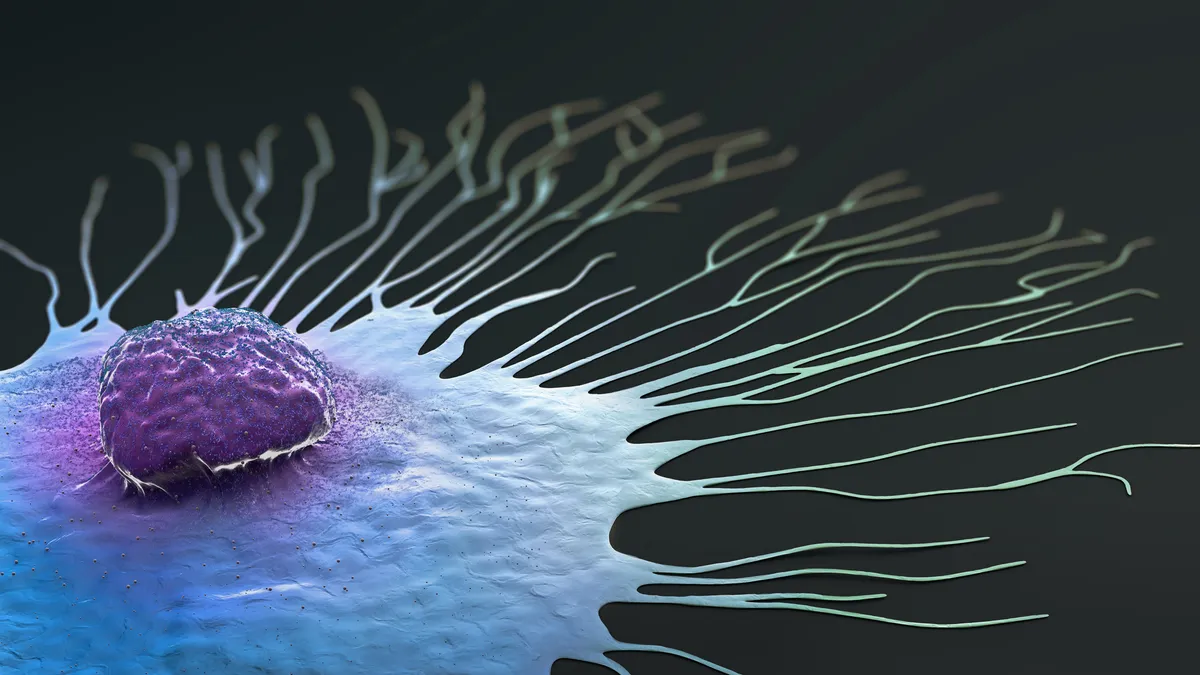Dive Brief:
- A Food and Drug Administration advisory committee has voted that the benefits of a new agent used in Lumicell’s breast cancer imaging tool outweigh the risks.
- The committee, which convened last week, assessed evidence that the tool can detect residual cancer in real-time during breast conserving surgery. Detecting residual cancer during surgery could reduce the need for additional procedures.
- While the committee supported the risk-benefit profile of the agent, pegulicianine, by a 16-2 vote, many of the experts noted its limitations, with one panelist who voted yes saying that the “incremental benefits outweigh the small risks of anaphylaxis.”
Dive Insight:
The FDA convened the committee to discuss Lumisight and the Lumicell Direct Visualization System, respectively the drug and device components of a combination product. Lumicell developed the tool to support the detection of cancerous tissue in the resection cavity after the primary specimen is taken out in lumpectomy surgery. Incomplete resection raises the risk of cancer recurrence.
Lumicell filed for FDA authorization on the strength of two studies. In a randomized study, almost 8% of subjects had cancer in at least one layer of tissue removed under the direction of Lumisight. The result exceeded the FDA’s performance goal.
Some experts had concerns about the design of the studies, notably the choice of endpoints. The FDA agreed to the use of patient-level removal of residual cancer and tissue-level sensitivity and specificity as the co-primary endpoints. Lumicell only missed on sensitivity but experts questioned what was shown by the hits on the other measures.
Cynthia Pearson, a women's health activist who voted yes, said the relationship between improvements in patient-level removal of residual cancer and the risk of recurrence or additional surgery is unclear.
Marie Griffin, a professor at Vanderbilt University School of Medicine, voted no, saying “we don't really know how this will ultimately affect patients' outcomes.” Harold Burstein, professor of medicine at Harvard Medical School, cast the other no vote and expanded on the analysis of the study’s limitations.
“Does [the tool] make for a better outcome for the patient? There's really no data here that that's true in this trial,” Burstein said. “This was not a randomized trial in the conventional sense of comparing two arms for outcomes. It was essentially a large, open-label experience. In that small study, there were eight patients out of 357 who might have not had a second operation.”
Some people who voted yes had reservations too. Andrea Richardson, a professor at Johns Hopkins, said the “incremental benefits outweigh the small risks of anaphylaxis.” The tool fell short of the “the end game” of no positive margins that Texas Southwestern Medical Center’s Marilyn Leitch hoped to see but the professor still voted yes.
“It'll be most beneficial for surgeons who have higher re-excision rates. For surgeons who have low re-excision rates, they may have courage to cut back on just random cavity margin re-excision and adopt a more directed approach which could minimize the amount of tissue that's removed,” Leitch said.
The FDA often follows advisory committee recommendations about whether to accept or reject an application for authorization but is free to reach its own decision. Lumicell expects the FDA to make a decision in the near future.
Lumicell submitted a premarket approval application for its Direct Visualization System to the FDA in April 2023.










